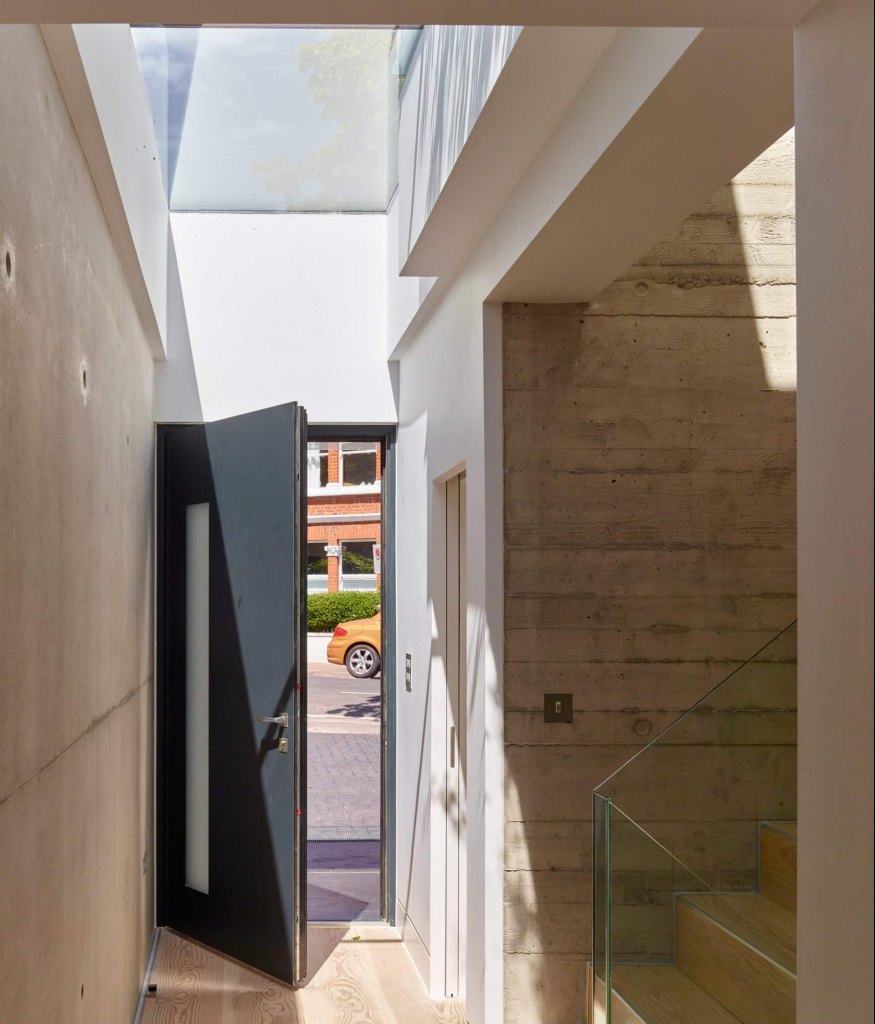Posted on May 21, 2024 in Blog
The acoustic performance of glass in rooflights and skylights depends on double- or triple-glazed, the size of gap between panes, and pane thickness.
What is acoustic glass?
While double- and triple-glazed units are designed and specified to provide an acoustic benefit, the term ‘acoustic glass’ refers to the specific inclusion of a pane of laminated glass in the glazed unit.
A laminated pane is two panes of glass bonded together by an interlayer. The way in which the interlayer holds the glass, even if it is broken, means laminated glass is an excellent choice where safety and security are a concern.
The most common interlayer material – PVB, or polyvinyl butyral – also acts to dampen sound. Specific acoustic interlayers are also available, to further improve performance.
A laminated pane with PVB interlayer is thicker than the other standard pane(s) in a double or triple glazed unit. This, combined with the spacing of the panes, acts to disrupt the energy of sound waves passing through the glazed unit and deliver a decibel reduction for the comfort of building users.
Architecture WK’s design for an extension to a private residence in Wimbledon featured a good example of a noise-reducing specification: the double-glazed Ridgeglaze rooflight included a 6mm heat soak tested toughened low-emissivity outer pane, 16mm of argon, a black warm edge silicone-sealed spacer, and a 9.5mm heat-strengthened PVB laminated inner pane.
Learn more about laminated glass in our blog post about toughened and laminated rooflights.
What are the benefits of acoustic glass?
The legal limit for work noise is 85 decibels, and average factory noise is at around this level. Any extra reduction over those 35 decibels only adds to the acoustic comfort benefit.
“Because glass follows the mass law of sound transmission, doubling the thickness of a pane reduces sound transmission by 4 to 6 decibels,” explains Jeremy Dunn, Group Technical Director at Glazing Vision. “But it also doubles its weight, so there is a limit to how thick panes can be before negative impacts on other considerations – like structural support, handling and installation – outweigh the acoustic benefits.”
Is rain noise a problem with rooflights and skylights?
Rain noise is an inevitable result of installing rooflights in a pitched roof or flat roof. Fortunately, the development of highly engineered double- and triple-glazed solutions, and even acoustic glass, has helped to reduce the nuisance of rain noise on roof glazing compared to single glazing.
Arguably, most projects focus on the provision of daylight and a connection with the outside when thinking about rooflight provision. But with climate change bringing more frequent extreme weather events, it increasingly makes sense to think about the acoustic performance of the glazing being specified too.
How to reduce rooflight noise
Alongside the glazing specification, it is possible to specify accessories like blinds or shutters that provide some acoustic benefit as well as offering some solar control options. These options are unlikely to make enough difference on their own though, so the glazing specification should always be the starting point for acoustic performance.
The acoustic performance of a rooflight unit also depends on the quality of its installation and airtightness. Any use of fillers or packers can create gaps. Air leakage, and the resulting sound transmission, around the whole unit can be addressed by lining the reveals with a sound absorbing material.
Should rooflights meet any regulations or standards for acoustics?
If a project is located within a particularly noisy urban area – especially close to a road or flight path – then there might be a limit to how much external noise can be reduced, even with the specification of other accessories. Both natural and non-natural noise sources can never be eliminated entirely.
As ‘nuisance sound’, noise is a subjective topic. Decibel levels put a useful threshold on defining sound levels, and safe sound levels particularly, but noise is also context specific. What is tolerable to one person might be unbearable to another.
BS 8233:2014 Guidance on sound insulation and noise reduction in buildings provides criteria like suitable sleep conditions and noise levels that normally satisfy most building users. It covers external noise sources but does not differentiate between ‘pleasant’ and ‘unpleasant’ sounds, or psychological factors associated with noise.
Ultimately, the standard aims to provide information that allows buildings of all types to be designed with acoustic environments appropriate to their functions. It has the status of guidance only, rather than being a code of practice against which claims of compliance can be made.
About Glazing Vision
Architecturally ambitious and impressive rooflight installations often aim to meet higher standards of performance, especially when looking to achieve a comfortable indoor environment. Specifying rooflight and skylight glazing for acoustic performance can help to reduce external noise, be it from rain or other ‘non-natural’ sources.
With no regulatory requirement to reduce external noise to a particular level, designers and specifiers can choose their own level of performance for individual projects. As part of Glazing Vision’s expert technical support – helping to meet daylight, ventilation and access requirements – we can also assist with glazing unit specification for acoustic performance.
When choosing Glazing Vision rooflights, we provide all the details required for correct specification of opening or fixed rooflights, and specialist solutions like walk-on rooflights, including U-values and CAD drawings.
For further advice and guidance on how Glazing Vision architectural rooflights can help to meet your project’s comfort requirements, download our ‘Guide to Specifying Glass in Rooflights’ or contact us.














